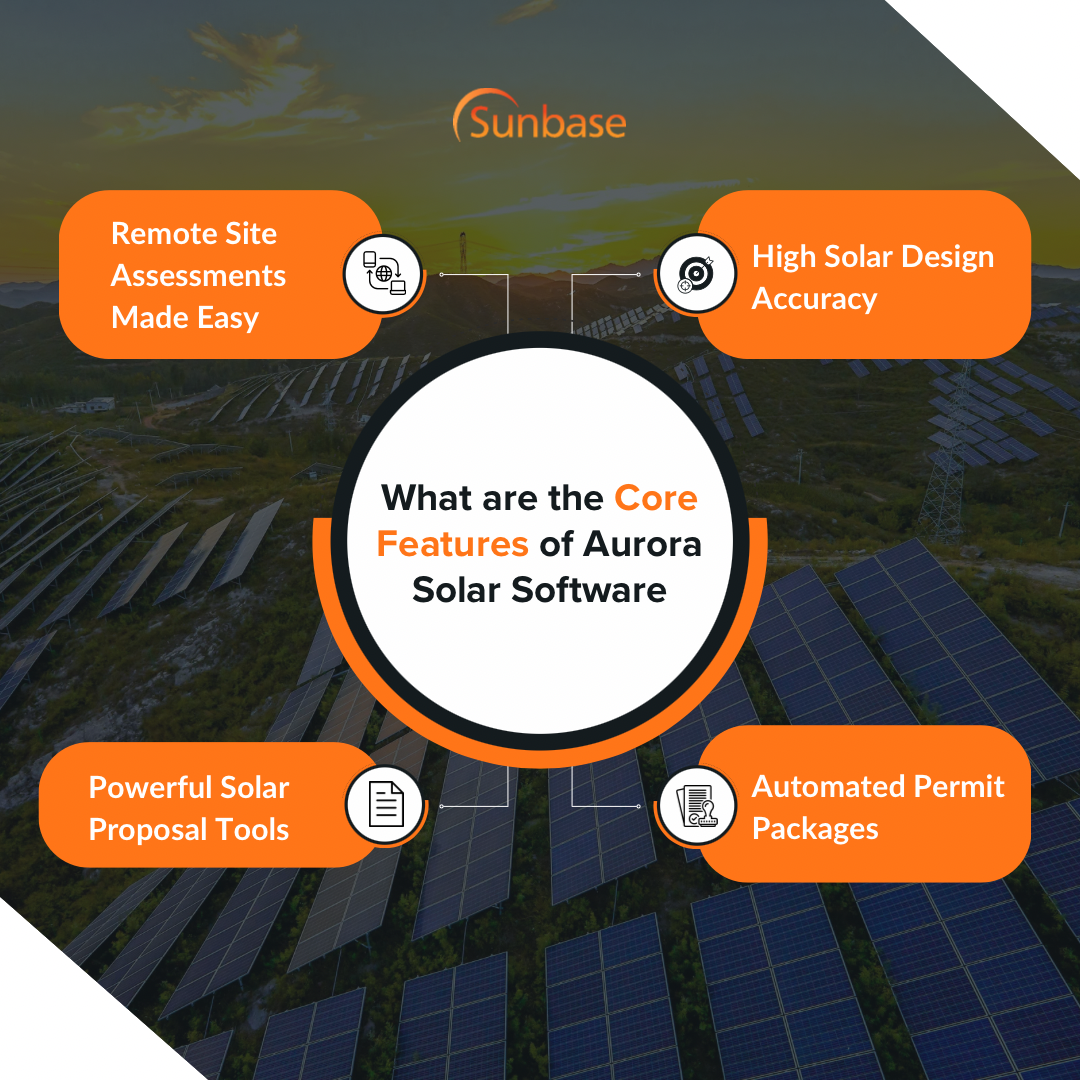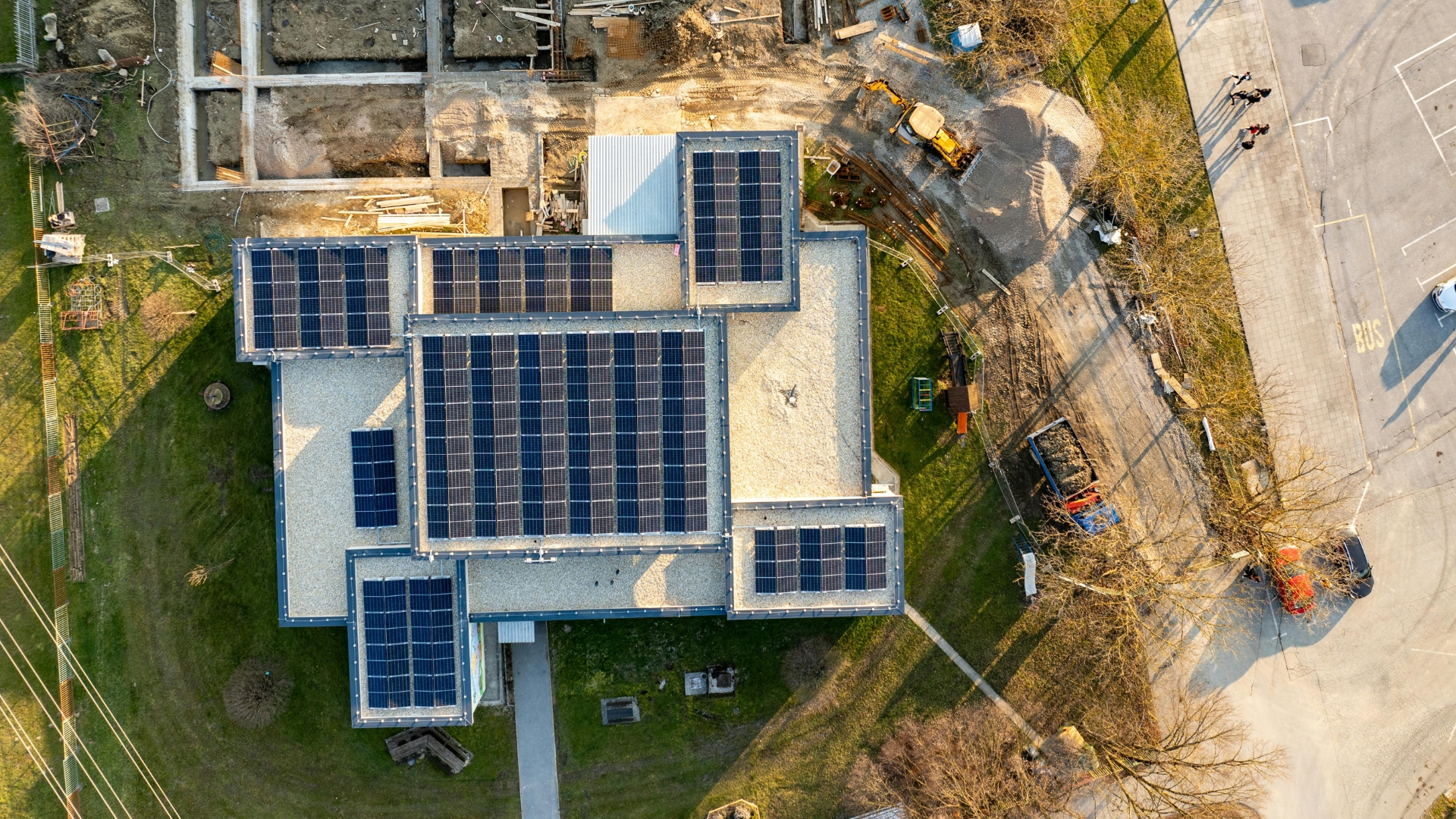August 7, 2025
Considering Aurora Solar software, but unsure if it’s worth the hype and price? We get it.
Whether you're a sales representative closing deals, a design engineer seeking accuracy, or a business owner expanding operations, getting your solar design right isn't just the start; it’s everything.
That’s where Aurora Solar Software positions itself as the ideal solution.
However, if you are confused about what exactly Aurora offers? How precise is it? Is it suitable for your team?
And how does it compare to other solar software options? Well, you're in the right place!
Aurora Solar Software Explained: Pros, Cons, and Who It's Best For
Thinking about Aurora Solar but questioning if it's a perfect choice for you or not? This guide explains everything about Aurora Solar, its design tools, proposal, financing tools, and who it's really built for.
Whether you’re a solar expert overwhelmed with manual site visits or just fed up with weak proposals that don’t seal the deal, we’ll help you determine if Aurora or other available options could be the solution your workflow needs. Let's find out together!
Key Takeaways
- Aurora creates 3D layouts, shading reports, and system outputs. It enables reps to build proposals with customers and secure contracts and financing on the spot.
- Aurora uses LIDAR, NEC tools, and export plans. It’s accurate, code-aware, and fit for remote work.
- It might be ideal for enterprise-scale operations, but not for startups or small teams.
- Aurora doesn't have an integrated CRM, so if you're looking for a comprehensive platform that combines everything, especially for end-to-end team workflows, Sunbase could be a better long-term option.
What Is Aurora Solar Software and Why Is It A Game-Changer?
Let’s be honest: solar projects are great, but they’re not always simple. Confusion starts right from the design phase! One panel is misaligned, and the energy decreases!
So, how can you ensure the right panel placement from the start? The answer is: use a good design tool! And Aurora provides exactly that.
A Quick Overview
Aurora Solar Software is a cloud-based platform built for solar professionals. It’s more than just a design tool: covering remote site assessments, 3D panel layouts, auto-generated proposals, and financial modeling, it oversees the complete solar project process, from initial lead to final design.
In simpler words?
- It’s carefully designed just for the solar industry, making it perfectly suited to meet your needs.
- It supports both residential and commercial projects.
- It brings your sales, design, and engineering teams together within a single digital platform.
Now, let's explore why exactly you need solar software!
What Are The Challenges Faced By The Solar Industry?

Let's pinpoint the challenges specific to the solar industry:
1. Lengthy On-site Visits Are Required For Assessments
Although hardware costs have decreased, soft costs such as permits and inspections stay high and slow, extending installation times by weeks and increasing costs for homeowners. These delays also raise the likelihood of cancellations.
2. The High Stakes of Utility Solar Design
Errors in utility solar engineering and design can lead to costly project delays and overspending. The National Renewable Energy Laboratory (NREL) states that design errors can increase project costs by 10-20%, mainly due to the need for redesigns, additional equipment, and longer timelines.
3. Ineffective Proposals Fail To Secure Sales
Many solar companies take too long to respond to leads, sometimes weeks, resulting in lost sales opportunities and giving their competitors a significant advantage.
Did you know? A study found that nearly 40% of potential solar customers waited weeks for a quote, and many received no response.
4. Scaling Design Teams Is Getting Tougher
As solar projects become increasingly complex, many companies struggle to efficiently grow their design teams, particularly when they lack modern software tools and find it challenging to keep pace with evolving demands.
So, how does Aurora solve them?
What Are The Core Features Of Aurora Solar Software?

1. Remote Site Assessments Made Easy
Climbing rooftops with a tape measure and sketching layouts by hand? It's not only time-consuming but also risky and outdated.
With Aurora, you can enjoy a seamless experience right from your desk. You gain access to HD aerial imagery, LIDAR data, and AI-powered roof detection tools that enable you to model roofs accurately, all without visiting the site.
- High-definition aerial imagery: This provides high-resolution rooftop images for visual inspection of roof conditions, shading obstacles such as chimneys and trees, and suitable spaces for solar panels.
- LiDAR (Light Detection and Ranging): This data accurately captures 3D roof details, including shape, size, tilt, and orientation, essential for calculating solar radiation and energy output.
- AI-powered roof detection tools: AI models can automatically identify and segment rooftops from aerial images, speeding up the assessment process.
2. High Solar Design Accuracy
One incorrect panel placement or poor stringing setup can send your hours of project work right back to revision mode.
So, how does Aurora help you skip the revision mode?
- NEC-compliant designs: Ensures your designs meet National Electrical Code standards.
- Auto-stringing & inverter pairing: The software automatically and optimally connects panels to inverters.
- 3D modeling: Create accurate digital models of rooftops and layouts in a real-world view.
- In-app CAD engine: Make actual edits directly in Aurora, eliminating the need to export files elsewhere.
- Shading analysis: Generate solar access reports and review irradiance maps to assess annual sunlight exposure for the panels.
Learn in detail why solar system design is crucial for maximizing energy output.
3. Powerful Solar Proposal Tools
You could offer the perfect solar setup, but if your proposal looks like a tax form, your customer won't say yes, regardless of how well-designed it is.
Aurora provides you with a collection of sales tools that help your proposals stand out.
- Customized, interactive proposals: Customized to fit your brand and your client’s needs.
- Advanced Storage Modeling: Demonstrate how solar storage benefits the customer.
- Integration with financial tools: Loans, leases, PPAs, and all other relevant financial aspects included in the proposal.
- Web-based presentations: Clients can access and review proposals from any device.
- Proposal tracking: Track when a proposal is viewed, forwarded, or signed.
- Customer journey visibility: Monitor the status of each lead in the sales pipeline.
4. Automated Permit Packages
Permits are rarely anyone’s favorite aspect of the job. With varying jurisdictions, excessive paperwork, and complex design documentation, it's easy to lose track of things.
With Aurora, approval just got easier:
- Access to the AHJ (Authority Having Jurisdiction) database.
- Documents are ready for submission with one click.
- Saves hours of work for design and permitting teams.
But: Where’s the CRM, Aurora?
Let’s get real: Solar sales aren’t just about design, it’s about connecting with people. Leads, follow-ups, and nurturing prospects until they commit to solar freedom.
That’s when a CRM (Customer Relationship Management) system becomes essential. It helps maintain your sales pipeline, automates reminders, personalizes messages, and tracks every deal from initial contact to installation.
But here’s the catch: Aurora Software- Brilliant at solar design. Have a Built-in CRM? Nope. Not part of the package.
So if you want to manage leads, automate follow-ups, and close deals without duct-taping five different tools, you’ll need an outside CRM to fill the gaps or choose an all-in-one solar software like Sunbase, where CRM is built in from day one.
Because let’s be honest… what good is a perfect design if your sales team loses track of the lead?
Use Cases: How Different Teams Use Aurora Solar Software
Now, how exactly does each team benefit from it? Let’s break it down team-by-team. Whether you’re in sales, installation, or contract management, Aurora supports everyone!
> For Sales Teams
If you're in solar sales, you know two things matter the most:
- Speed: Because leads lose interest fast.
- Confidence: Because homeowners don’t buy solar from reps who sound unsure.
So, how can Aurora Sales Mode help you pitch and close deals faster?
- Auto-designs in seconds: No need to wait for a designer anymore. Use Aurora’s AI tools to instantly generate 3D models, shading reports, and system simulations, even if you’ve never created a solar layout before.
- Proposals that actually sell: Turn boring PDFs into interactive, visual experiences. Guide homeowners through savings, systems, and layouts in real-time right on your tablet.
- Instant contracts & financial integration: Found the right fit? Close the deal without switching tools. Apply for financing and generate contracts without any hassle.
> For Installers And Designers
For installers, last-minute design changes or inaccurate measurements are the biggest loads that slow down progress.
With Aurora, reduce change orders by providing a precise design throughout the solar installation.
- Precise, ready-to-build designs: Gain access to remote site assessments, LIDAR-based shading, and AI-powered 3D modeling to ensure the design is right the first time.
- One platform, complete workflow: From lead to install, Aurora links every step of your project. Sales teams sell exactly what the installers build; there's no guesswork and no rework.
- Supports every business model: Whether you work with dealers, subcontractors, or manage everything in-house, Aurora provides the flexibility to adapt to your setup.
> For Contract Managers
If you're managing solar contracts, you're likely the one connecting the dots between sales, design, operations, and installation.
Without the proper system, you miss out on control, clarity, and collaboration. Aurora turns this situation around.
How can Aurora give you total visibility?
- Contracts in clicks: It automatically fills contracts using project data so that you can create documents in seconds without manual entry or errors.
- Close right then & there: Once a homeowner says “yes,” don’t wait to take action. Finalize the contract and secure signatures during the same meeting.
- All your docs in one dashboard: Store, manage, and send documents, all in Aurora. No email chains, no searching for the latest file. Just one trusted source.
Common question: What if we increase the number of projects?
As the number of your projects increases, so does the workload on your design team. You’re either hiring more people, asking for longer hours, or facing tough burnout (probably all three).
Solution: Aurora automates repetitive tasks and provides reusable templates.
It enables your team to accomplish more with less stress. Design processes become swifter, and review steps are simplified.
In a nutshell: Aurora Solar Software's Pros and Cons

Pros
- Unmatched design precision
- Streamlined sales-to-installation pipeline
- Great customer support
- Fast, mobile-friendly proposals
Cons
- No Built-in CRM
- Premium pricing
- Slight learning curve for beginners
- Limited offline functionality
Find out what makes CRM a must-have and check out our comprehensive guide to choosing the best Solar CRM in 2025.
Aurora Solar Pricing & Plans
> Overview of subscription tiers: Basic, Premium, Enterprise
| Plan | Price | Features |
|---|---|---|
| Basic | $159 user/month (Billed monthly) | Residential design and 3D visualizations, Sales proposals and Financial analysis, Automatic system design and On-demand site models access |
| Premium | $259 user/month (Billed monthly) | LIDAR-assisted modeling, Reliable shade reports, Sizing for battery storage and backup |
Enterprise (Custom plans for large companies):
| Build | Requires Demo | Sales Mode, Web Proposal, Design Mode, HD Imagery, Sync API and Basic Roles. |
|---|---|---|
| Grow | Requires Demo | Sync API, Basic Roles, Teams, Advanced Roles, Single Sign On |
| Scale | Requires Demo | Sync API, Advanced Roles, Teams, Single Sign On Aurora Al and Contract Manager |
Since all aspects are covered, let's look at what real users say about Aurora Software!
What Aurora Users Are Saying?
Take a look at the good, the bad, and the game-changing software feedback:
How accurate are Aurora Solar simulations?
"We use Aurora Solar daily for submitting solar quotes to our leads. It consumes some more time but gives us good outcome, even our clients appreciates us on the designs accuracy." (Capterra, Solar Design Engineer)
Real quotes from solar professionals
"The automatic modeling feature is either spot on or missing a lot. Sometimes the trees could be represented more accurately. Sometimes obstructions are missed." (G2- Surveying Technician & Design Engineering)
Common complaints and feature requests
When asked what users disliked about Aurora, their feedback was:
"Their design support. Their EDS. Their design tool also has drawbacks. Their DXF creation is not 100% to scale." (G2, Director of Design & amp; Engineering)
"Some abnormal roofs are tough to get correct in Aurora." (G2 - Solar Designer)
Common complaints about Aurora Solar simulations include inaccurate terrain analysis, especially in unusual roof configurations and remote areas, as well as challenges with the learning curve for designing roof planes.
Feature requests often focus on enhancing proposal customization, improving the accuracy of the automatic modeling feature, and refining the DXF creation process.
Aurora Solar vs Competitors: Is It the Best Solar Software?

1. Sunbase
Sunbase is an end-to-end solar management software. It positions itself as a complete solution, specifically built for the solar industry. Its goal is to replace multiple software tools used by integrating all business operations, from design to proposal to project management, into a single platform.
Best For:
- Ideal if you're looking for a single software to manage everything, as it's an all-in-one platform that handles everything from design and proposals to project management
Key Features:
- Solar design tools for designing PV arrays, including remote site evaluation using satellite imagery, customizable layouts, and accurate energy production simulations.
- Built-in customer relationship management (CRM) helps manage prospect and customer data, track interactions, automate follow-ups, and personalize communication.
- Proposal generation enables the creation of professional, customized, and branded proposals with features like e-signatures and financing options.
- Project management features help track project progress, schedule appointments, manage tasks, and facilitate seamless real-time collaboration with team members.
- The door-to-door canvassing feature presents tools such as route optimization, lead management, and performance tracking, enabling effective outreach.
Pricing:
- Book your personalized demo here to learn more about pricing.
Review:
"Sunbase is responsive, and their solutions have helped us streamline our entire workflow."
2. Solargraf
Solargraf focuses on software for designing and proposing solutions for commercial and residential solar projects. It's a helpful tool for solar sales teams and installers, making it easier for them to scope, sell, and manage their solar proposals effectively.
Best For:
- Simple and effective for small to mid-sized sales teams.
Key Features:
- Solar design software simplifies the process by automatically identifying roof outlines and measurements from images.
- It also allows users to build detailed 3D models, perform shading analysis, and simulate energy output for optimal system design.
- It helps create branded, professional proposals with dynamic pricing and financing options.
- Proposals can be delivered electronically, and integrated e-signature capabilities streamline the approval process.
Pricing:
- Starter: $2,799 (Annually)
- Small Business: $4,799 (Annually)
- Teams: $6,399 (Annually)
- Enterprise: $12,999 (Annually)
Review:
“Solargraf team has consistently provided a high level of support, expertise and friendly service over the years”
3. OpenSolar
OpenSolar is a cloud-based platform designed to help solar professionals manage all aspects of their business. It is especially recognized for its free pricing, which makes it an attractive option for startups and smaller firms in the solar sector.
Best For:
- Ideal for startups or lean teams seeking free tools with strong design and sales features.
Key Features:
- The design tool, validated by a US government agency and PVEL, uses photogrammetry-based DSM technology to ensure accurate shading estimates and includes a performance calculation engine.
- Interactive customer proposals have built-in payment processing, multiple financing options, e-signature capabilities, and white-label branding.
- OpenSolar offers a built-in CRM for managing customers and businesses, or it can be integrated with existing CRMs via API, enabling seamless communication and scheduling.
- Helps manage projects, tasks, and team members effectively with customized assignment and permission features.
Pricing:
- OpenSolar offers free features, while users can select additional services such as HD premium imagery bundles to tailor their workflow.
Review:
"OpenSolar, a functional application for the design, presentation, and sale of photovoltaic energy."
Head-to-Head Comparison of Aurora, Sunbase, Solargraf, and OpenSolar: Which One Best Fits Your Needs?
| Features | Aurora | Sunbase | Solargraf | OpenSolar |
|---|---|---|---|---|
| Design | ✔ | ✔ | ✔ | ✔ |
| Proposal | ✔ | ✔ | ✔ | ✔ |
| Built-in CRM | - | ✔ | - | ✔ |
| Project Management | - | ✔ | - | ✔ |
| Financial Management | ✔ | ✔ | ✔ | ✔ |
So, Is Aurora Solar Software Worth It?
Short answer? Yes, but only if you understand what you’re getting and how your team operates.
As the rooftop solar market grows and demand for clean electricity increases, tools like Aurora empower contractors to work with design accuracy and efficiency.
But let’s not rush. Let’s break it down in simple terms, with no fluff, some honest insights, and a little side-eye at the alternatives.
> Short Checklist: Should You Be Using Aurora?
| Criteria | If this sounds like you… | Should You Be Using Aurora? |
|---|---|---|
| Team size | You have a small to midsize team, or you're expanding quickly. | Yes |
| Project volume | You handle multiple jobs each week or month. | Yes |
| Sales process | You need eye-catching visuals and interactive proposals to close leads. | Yes |
| Design process | You have in-house designers or sales reps who need quick layouts. | Yes |
| Workflow | Your teams pass projects across sales, design, install & permitting. | Yes |
| Tools you're juggling | You typically use 3–5 tools to complete a single solar job. | Yes (But it's time to consider other options) |
| End-to-end Management | You need design, proposal, CRM, and project management all in one place. | No |
> Who Should Buy It And Why?
Here’s the sweet spot for Aurora:
1. Growing Solar Companies
If your team is growing and you want consistency, control, and quicker sales cycles, Aurora’s automation and AI can lighten your load.
2. EPCs & In-House Design Firms
Aurora’s design precision can help you prevent costly rework, change orders, and failed inspections.
3. Sales-First Organizations
Enable your reps to self-quote confidently. Interactive proposals paired with instant contracts result in more deals being closed immediately.
Final Verdict
Here’s the answer: If you’re serious about growing your solar business, YES, Aurora is worth it, but only if it suits your needs. For high volumes, managing teams, or when precise solar modeling is necessary, it's a smart choice. It satisfies the technical, compliance, and sales needs of expanding solar companies.
However, if you’re seeking a comprehensive solution that integrates CRM, design, proposals, project management, and door-to-door sales tools within a single app, Sunbase is highly worth considering. It serves as the all-in-one platform your solar teams have been looking for.
Meanwhile, Solargraf excels for those who need quick, affordable tools with strong proposal design, and
OpenSolar is ideal for those starting out and want to keep costs low while maintaining a professional appearance.
For more information, check out our Complete guide to understanding the difference between Solar Design Software and Solar Software.
In a nutshell
At the end of the day, all software helps contractors create ultra-precise rooftop solar designs that maximize efficiency, ensuring every panel contributes its full potential.
That means less reliance on the grid and bigger savings on your electric bill. Over time, this adds up to tens of thousands of dollars saved. Yep, the sun just became your side hustle!
If a software aligns with the future you envision, then you made a good choice; however, if you are likely to spend more time switching tools, then you won't be able to keep pace.
The best way is to test the waters. Book a demo. Get a walkthrough. Ask the tough questions. Just don’t wait until your fifth change order this month to realize… Maybe it’s time to upgrade.
Thinking Bigger Than Just Design!
Why pay for 5 separate tools when Sunbase Solar Software offers everything in one platform?
Design it. Sell it. Track it. Book your Sunbase personalized demo now!
FAQ’s
1. Should you use Sunbase instead of Aurora?
If you want a platform that consolidates functions for end-to-end team workflows, Sunbase may be a more sustainable long-term investment. Many companies use both Aurora for solar design and Sunbase for leads, projects, and CRM.
2. Can Aurora help with solar tax credits?
Aurora doesn’t handle your taxes, but it provides proposals that include solar tax credits and incentives. This makes solar accessible and indirectly benefits everyone involved.
3. Can you customize designs for different rooftops and climates within the software?
Software like Aurora and Sunbase offers a highly customizable design engine. You can consider panel type, roof pitch, azimuth, and shading from nearby trees or buildings. Such detailed attention is crucial for optimizing system efficiency and extending the lifespan of solar panels.
I agree to receive marketing messaging from Sunbase at the phone number provided above. I understand data rates will apply, and can reply STOP to OPT OUT.







